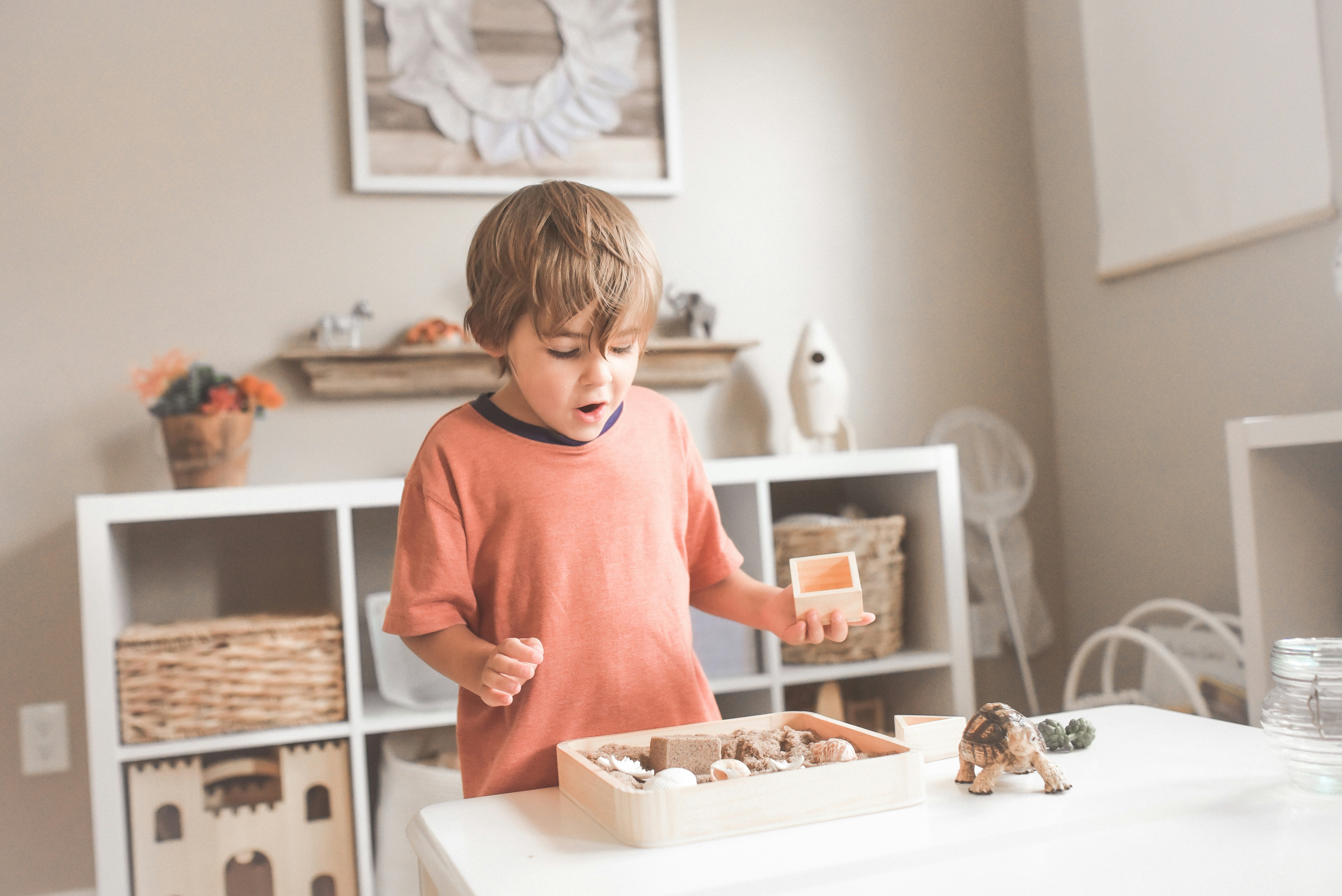A recent Winstanleys Pramworld Instagram poll revealed that a whopping 73% of parents confessed to finding mealtimes with their little ones stressful. This aligns with a recent John Lewis study, which found that 31% of parents dreaded mealtimes because they found them stressful.
"Weaning is an exciting milestone for parents and little ones, but let's be honest, the mess can be stressful!" says David Winstanley, Director at Winstanleys Pramworld. Whilst spaghetti stains can test your patience, messy mealtimes are an important part of a baby's development. It’s essential to find ways to embrace the chaos of weaning. That's why we've teamed up with experts to offer stain removal tips and tricks to keep those colourful creations off your clothes!”
Whilst the weaning journey is exciting, meal times often lead to colourful (and stubborn!) stains on bibs, clothes, and highchair covers, causing stress for house-proud parents. To help, Winstanleys Pramworld has revealed its top 5 stubborn stains and partnered with cleaning experts Jess Farinha and Nicola Rodriguez to uncover the secrets to removing even the most stubborn stains.

Expert Stain Removal Hacks
1. Banana
Little ones love bananas, but their mashing mayhem can leave unsightly stains on clothes (yours included!). While the messy moment might be cute, those stains will quickly turn dark thanks to oxidation. But fear not—with the right treatment, you can beat banana stains and keep clothes looking fresh.
Jess Farinha commented: “Salt can be highly efficient if you want to remove banana stains. Grab the salt and sprinkle it onto the stains. Use enough to cover the stain completely, and let the salt sit for 20–25 minutes to absorb the moisture. Remove the salt, wash the fabric with mild detergent, and then air-dry.”
2. Peanut Butter
Peanut butter is a delicious and versatile food, ideal for dipping, spreading, and, if you're a baby, smearing pretty much everywhere! However, its oily consistency can pose a challenge when it comes to removing stains. Fear not, though, seven stubborn peanut butter stains and greasy marks are not impossible to conquer.
Jess Farinha commented: “Peanut butter is a combination of oils and proteins. To remove the oily stains of peanut butter, white vinegar can be your saviour. Just mix vinegar and water in equal quantities. Apply it directly to the stain and let it sit for 20–30 minutes to work its magic. Use cold water to rinse off thoroughly.”
3. Tomato-based sauces
Spaghetti-covered babies are synonymous with baby weaning, but the bright red sauce can leave a not-so-cute stain. While tomatoes are nutritional powerhouses, they contain tannins that love to cling to clothes, highchairs, and even cutlery. These stubborn stains, especially when paired with oil, might seem like a disaster, but with the right techniques, you can tackle them like a pro!
Nicola Rodriguez commented: “For tough tomato sauce stains, this trick works wonders: mix equal parts hydrogen peroxide and washing-up liquid. Be cautious if using the mixture on coloured fabrics. Apply the mixture to the stain, then gently rub the fabric or use a soft brush. Finally, rinse thoroughly with cold water. “For tough tomato sauce stains, this trick works wonders: mix equal parts hydrogen peroxide and washing-up liquid. Be cautious if using the mixture on coloured fabrics. Apply the mixture to the stain, then gently rub the fabric or use a soft brush. Finally, rinse thoroughly with cold water.”
Top Tip: If you have tomato-stained plastic items such as tupperware, bowls and cutlery then soak them in a solution of half vinegar and half water for 12 to 24 hours- they’ll come out looking like new!

4. Berries
Bold berry stains might look irreversible, but don't worry. They're plant-based, which means acids like lemon juice or vinegar can help break them down for pre-treatment. With the right approach, you can still save those berry-stained baby clothes!
Nicola Rodriguez commented: “Vibrant berries such as cherries and blackberries can be tricky to remove, especially from light-coloured clothing. For stubborn berry stains, add lemon juice or vinegar directly on the stain and leave to sit for five minutes. Rinse the fabric with cold water and wash as usual.”
Top Tip: If you're in a restaurant, ask for a slice of lemon and start the stain-removal process on the spot!
5. Egg
Egg yolk's vibrant yellow colour may be natural, but don't be fooled! It's the fat and protein in egg yolk that makes those stains a real challenge to remove. Luckily, there’s a straightforward solution to removing even the most engrained egg stains.
Jess Farinha commented: “Try using sparkling water on delicate fabrics to remove the stains of an egg. The carbonation can easily remove the stain without any harsh chemicals and keep the fabric intact. Blot with a cotton cloth and rinse with cold water.”
Stain Removal Tips
● Blot, Don't Rub: Rubbing a stain can spread it further. Gently blot with a clean, absorbent cloth.
● Cold Water is Your Friend: Hot water can set stains. Always use cold water for pre-treatment and rinsing. Ice also works wonders on set-in stains!
● Embrace Natural Detergents: Baking soda, vinegar, and lemon juice are all natural stain removers that work wonders on many stains. They're a safe and effective alternative to harsh chemicals.
So there you have it, a fool-proof guide to tackling the top 5 stubborn stains! National Weaning Week is a reminder that while messy mealtimes are inevitable, they mark an exciting milestone in a child's development so embrace the mess and relieve the stress - you've got this!

All information we provide is for educational and awareness purposes only. Any concerns should be discussed with your GP, Midwife or Healthcare Professional.
If you’re trying to conceive (TTC), you probably know that there are certain foods and nutrients that become especially important once you’re pregnant. But nutrition plays a vital role even when trying to conceive, much like laying a strong foundation before constructing a house.
Certain nutrients create that foundation by supporting egg and sperm health (yes, nutrition matters for both partners), hormone balance and creating a hospitable environment for a fertilized egg to implant. In fact, studies show that certain nutrients can help increase fertility and improve success rates for both natural conception and fertility treatments.
In other words, nutrition is a key player in the TTC journey, but getting the right nutrients in the right quantities can be tricky. That’s where supplements come in. Just as you’d take a multivitamin to fill in nutritional gaps for optimal health, fertility supplements can give you that extra nutrient boost.
Choosing supplements for your fertility journey
When choosing a supplement to support your fertility journey, look for science-backed, high-quality ingredients. Our editors are careful to select and partner with brands that use ingredients that have been clinically studied to support fertility. Eu Natural® (pronounced you) covers all those bases and more. We love knowing that Eu Natural® products contain zero artificial additives, binders, or fillers and are lab-tested to ensure purity and potency.

When choosing a supplement to support your fertility journey, look for science-backed, high-quality ingredients. Our editors are careful to select and partner with brands that use ingredients that have been clinically studied to support fertility. Eu Natural® (pronounced you) covers all those bases and more. We love knowing that Eu Natural® products contain zero artificial additives, binders, or fillers and are lab-tested to ensure purity and potency.




.jpg)

.png)
.jpg)





